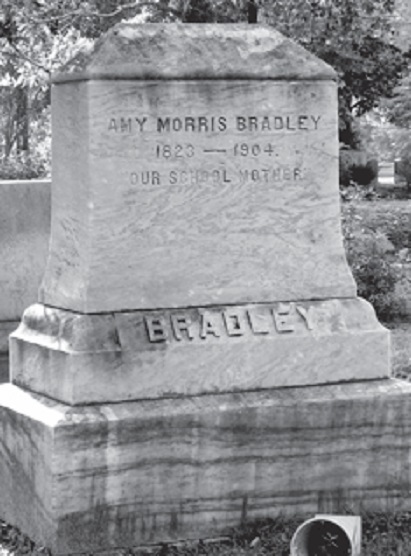STATE OF MAINE
PROBATE COURT
Court St., Skowhegan, ME
Somerset, SS
Location of Court
NOTICE TO CREDITORS
18-A MRSA sec. 3-801
The following Personal Representatives have been appointed in the estates noted. The first publication date of this notice is December 1, 2016.
If you are a creditor of an estate listed below, you must present your claim within four months of the first publication date of this Notice to Creditors by filing a written statement of your claim on a proper form with the Register of Probate of this Court or by delivering or mailing to the Personal Representative listed below at the address published by his name, a written statement of the claim indicating the basis therefore, the name and address of the claimant and the amount claimed or in such other manner as the law may provide. See 18-A MRSA 3-804.
2016-308 – Estate of RICHARD N. SALISBURY, late of Skowhegan, Me deceased. Jodi Dyke, 373 Chesterville Hill Road, Chesterville, Me 04938 and Elden Salisbury, PO Box 3011, Skowhegan, Me 04976 appointed Co-Personal Representatives.
2016-298 – Estate of LUCIE H. HUETTNER. late of Starks, Me deceased. Barbara Huettner, 375 Anson Road, Starks, Me 04911 appointed Personal Representative.
2016-309 – Estate of DOROTHY W. CLEAVER, late of Skowhegan, Me deceased. Thomas W. Cleaver, 2605 First Street, Matlacha, FL 33993 appointed Personal Representative.
2016-310 – of STEVEN D. EMERY, late of Detroit, Me deceased. Tiffany Emery Lackie-Ketcham, 134 C Street, Pittsfield, Me 04967 appointed Personal Representative.
2016-311 – Estate of STANLEY L. HUFF, late of St. Albans, Me deceased. Jenny-Lyn M. H. Brown, 1849 Hudson Road, Hudson, Me 04449 appointed Personal Representative.
2016-312 – Estate of DORIS M. TURCOTTE, late of Skowhegan, Me deceased. Edmond Turcotte, Jr., 359 Canaan Road, Skowhegan, Me 04976 appointed Personal Representative.
2016-314 – Estate of WALTER F. PARLIN, SR., late of Anson, Me deceased. Etta T. Parlin, 703 Horseback Road, Anson, Me 04911 appointed Personal Representative.
2016-315 – Estate of CONSTANCE ELLEN HOPKINS aka CONSTANCE C. HOPKINS, late of Solon, Me deceased. Lawrence S. Hopkins, 3827 Bonaventure Way, Pittsburgh, PA 15212 appointed Personal Representative.
2016-237 – Estate of RICHARD R. BLAISDELL, late of Fairfield, Me deceased. Susan L. Baker, 43 Beckler Hill Road, Monmouth, Me 04259 appointed Personal Representative.
2016-316 – Estate of MELROY H. FULLER, late of Norridgewock, Me deceased. Jean E. Fuller-Lehtis, 323 Pond Road, Albion, Me 04910 appointed Personal Representative.
2016-317 – Estate of EDWARD KENDALL PERKINS, late of Saint Albans, Me deceased. George Perkins, P.O. Box 2, Palmyra, Maine 04965 appointed Personal Representative.
2016-320 – Estate of JOHN ELIAS, late of Madison, Me, deceased. Frances J. Peters, 123 Franklin Avenue, Farmington, Me 04938 appointed Personal Representative.
2016-321 – Estate of GARY EUGENE LISHERNESS, late of Madison, Me deceased. Naomi J. Lisherness, 39 Ash Street, Madison, Me 04950 appointed Personal Representative.
To be published on December 1, 2016 & December 8, 2016.
Dated: November 28, 2016
/s/ Victoria Hatch,
Register of Probate
(12/8)
STATE OF MAINE
PROBATE COURT
41 COURT ST.
SOMERSET, SS.
SKOWHEGAN, ME
PROBATE NOTICES
TO ALL PERSONS INTERESTED IN ANY OF THE ESTATES LISTED BELOW
Notice is hereby given by the respective petitioners that they have filed petitions for appointment of personal representatives in the following estates. These matters will be heard at 9 a.m. or as soon thereafter as they may be, on November 30, 2016. The requested appointments may be made on or after the hearing date if no sufficient objection be heard. This notice complies with the requirements of 18-A MRSA §3-403 and Probate Rule 4.
2016-318 – Estate of MICHAEL ANDREW TESMACHER. Petition for Change of Name (Adult) filed by Michael A. Tesmacher, 14 Fahi Pond Road, No. Anson, Maine 04958 requesting his name be changed to Mary Ann Elizabeth Tesmacher for reasons set forth therein.
Dated: November 28, 2016
/s/ Victoria M. Hatch
Register of Probate
(12/8)











 by Katie Ouilette
by Katie Ouilette by Marilyn Rogers-Bull & Percy
by Marilyn Rogers-Bull & Percy


